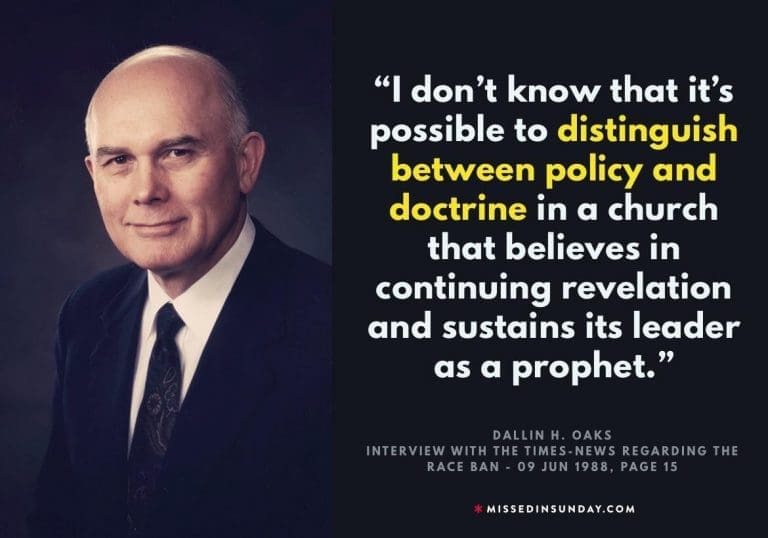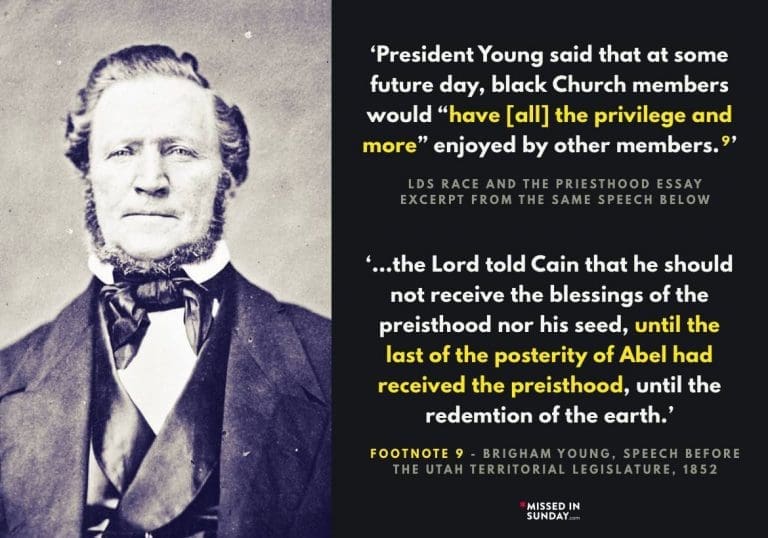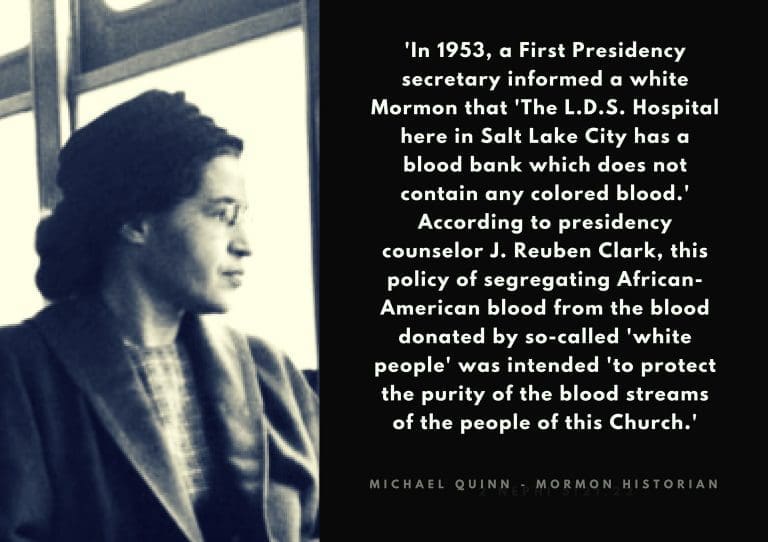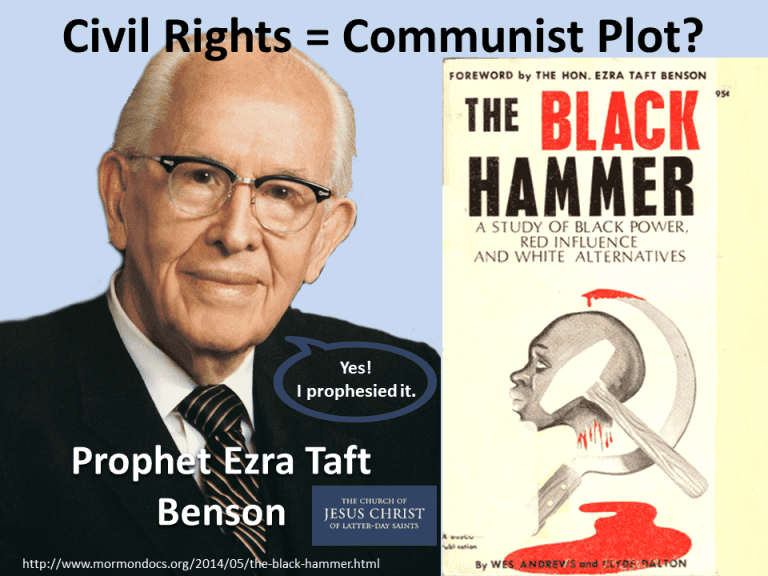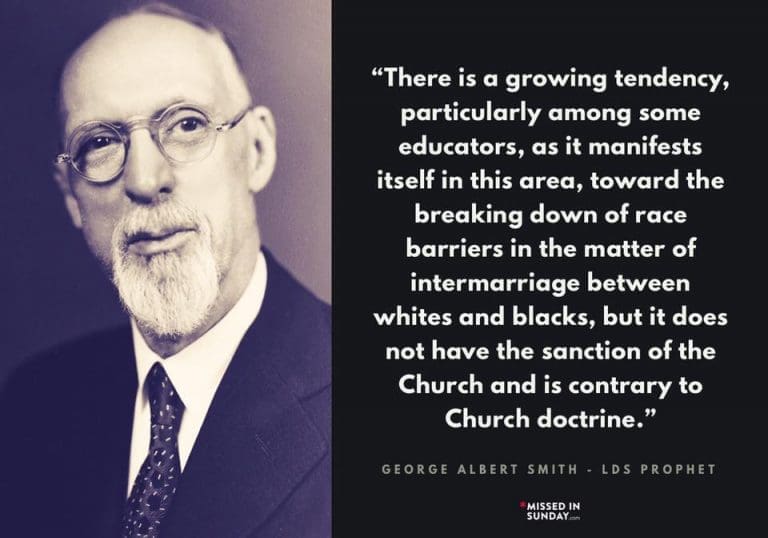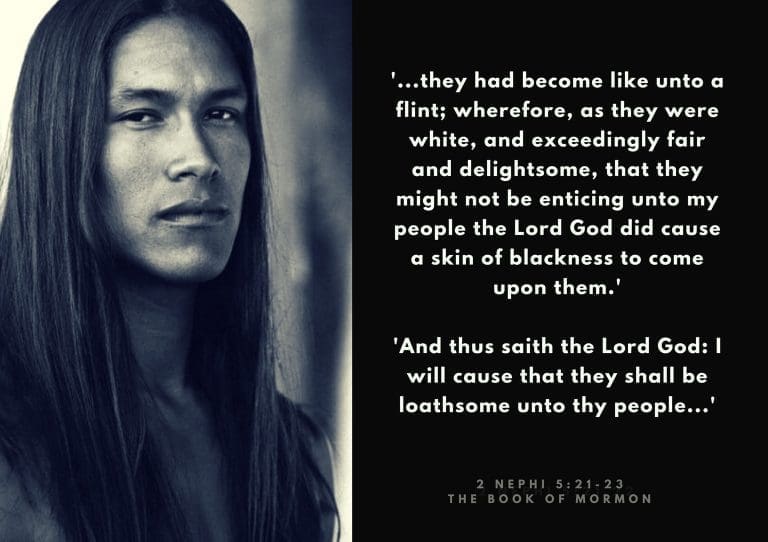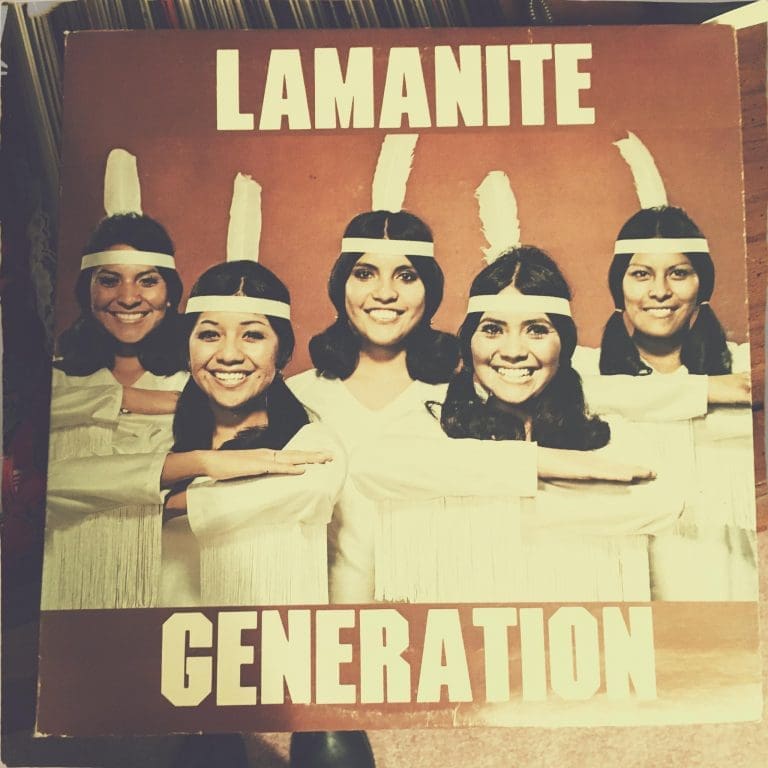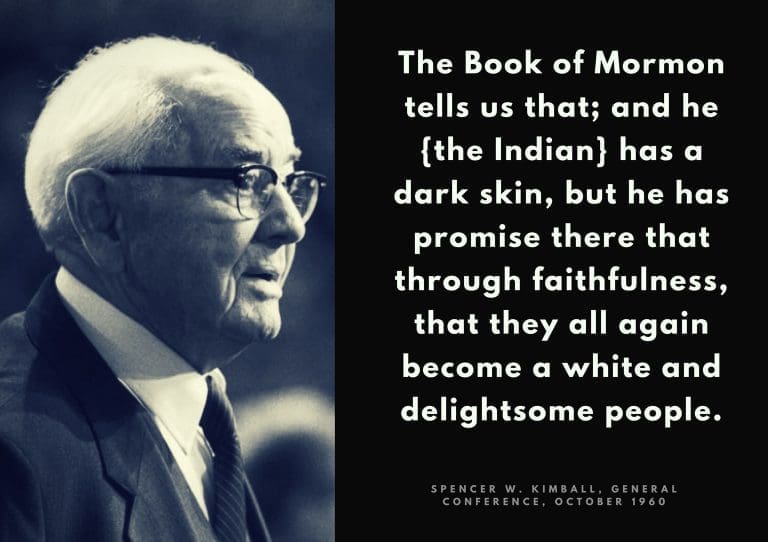Those with a belief in Mormonism have long struggled with a series of racial doctrines that were implemented and reinforced by LDS prophets. The Church canonized and promoted two separate racial doctrines – one pertaining to African Americans, the other pertaining to “Lamanites” (Native Americans and other non-white peoples). While never apologizing, admitting or denying culpability for divinely attributed racism called doctrine repeatedly, the Church now suggests it does not know exactly how its race-based policies and doctrines originated or why they were perpetuated. Further, it refuses to see the ways in which yesterday’s “doctrine” proclaimed by prophets with direct access to God becomes tomorrow’s disavowed policy attributed to generational bias or prejudices common to the time period in which they were perpetuated. despite the fact that early Church leaders specifically pointed to canonized scripture and abundant LDS teachings as evidence supporting those doctrines.
The LDS prohibition on priesthood ordination of males of “African bloodline” and male and female temple admittance originated without any direct corroborating revelation, discussion among the First Presidency or vote of common consent. It formally began with Brigham Young in 1852 and was accepted by later leadership and continued unquestioned as if from God.
Having conducted a private study on the topic, President David O. McKay understood the ban to be mere policy as early as 1954 at the beginning of the Civil Rights Era, yet it wasn’t until 1978 that President Spencer W. Kimball managed to obtain the required approval of the full Quorum of the Twelve to make an official change. Growing social pressures inside and outside of the Church, expansion into potentially profitable and racially diverse communities, political pressure manifest in the censure of BYU athletics and exclusion from various leadership circles, and intense personal lobbying among the LDS Presidency finally provoked a reversal of God’s will for more than 100 years before mysteriously becoming unexplainable.
The LDS Church’s second unavoidable and broader race doctrine, often associated with the idea of “Lamanites,” remains canonized as scripture in the Book of Mormon: the notion that dark skin originated from God’s curse upon the unrighteous ancestors of Native Americans (and others like those of Polynesian ancestry). As many members maintain a literal interpretation of the Book of Mormon as a factual historical record, in accordance with prophetic instruction, it is troubling to see how God’s explicit curse of dark skin and the supposed promise from God that dark skin will be turned white has been used to justify additional racial discriminatory theories within the Church, such as the Indian Placement Program. Such notions are reflective of archaic and thoroughly discredited thinking. In the modern scientific age, we can be certain that the skin color of America’s First Nations People is not the result of a two-thousand-year-old curse.
Today, the LDS Church takes pride in claiming that its current doctrine is inclusive and that its membership is diverse. It has made official statements which disavow racism. However, there are still serious questions to be asked about the so-called process of “revelation” that lags far behind society as the leadership ages, and about whether or not the older policies of prejudice and justification continue in old and new ways.
While the LDS Church proselytizes successfully in many countries, positively portraying the teachings of the Book of Mormon as a literal record of a group of “Lamanites” whose descendants are to be seen in disparate parts of the world, it has not yet reckoned fully with the racist doctrines which were the basis of the ban from temple blessings to those of African ancestry.
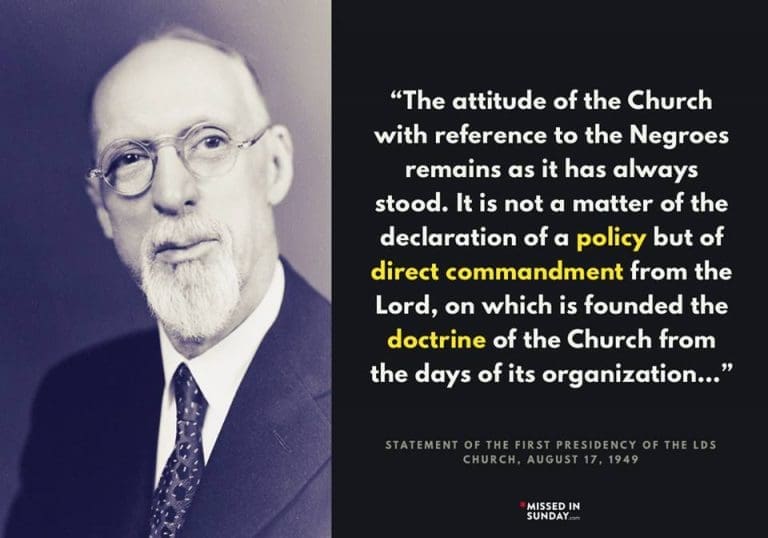
LDS RACE DOCTRINE: AFRICAN AMERICANS
Although there are many Christian traditions that use the Bible as justification for racial prejudice, segregation and teachings about inferiority, including many Christian traditions in American history that bolstered the institution of slavery, the LDS First Presidencies in many eras have relied upon uniquely Mormon scriptures, such as the Books of Moses and Abraham in The Pearl of Great Price, to justify its racial prejudice as doctrinally-based. Here are a few of the specific LDS scriptures that Joseph Smith (who current essays of the Church imply was free of the racial prejudice of his time period and that later infected Brigham Young and others) enshrined as God’s word:
“…there was a blackness came upon all the children of Canaan, that they were despised among all people…” (Moses 7:8).
“…they were a mixture of all the seed of Adam save it was the seed of Cain, for the seed of Cain were black, and had not place among them” (Moses 7:22).
“From Ham, sprang that race which preserved the curse in the land.” …and the lineage of Cain was “cursed…as pertaining to the priesthood” (Abraham 1:24, 26-27).
Parley P. Pratt provided the first recorded priesthood ban statement in April 25, 1847, when he instructed, “…a black man with the blood of Ham in him which lineage was cursed as regards the priesthood.” The Church now suggests that Brigham Young initiated the “policy,” as he issued a public proclamation in 1852 denying blacks the priesthood. [1] Under Brigham’s leadership, Utah would become the only Western Territory to enshrine slavery and slave sales in territorial statute.
LDS Presidency Statement
For over a century, LDS prophets left little room for ambiguity when affirming the Church’s racial doctrines as doctrine and not mere policy. Prophet and President Joseph F. Smith affirmed in 1952, “The attitude of the Church with reference to the Negroes remains as it has always stood. It is not a matter of the declaration of a policy but of direct commandment from the Lord, on which is founded the doctrine of the Church from the days of its organization, to the effect that Negroes may become members of the Church but that they are not entitled to the Priesthood at the present time. The prophets of the Lord have made several statements as to the operation of the principle.”
Furthermore, the First Presidency of the LDS Church tied the doctrine of African blood inferiority to a uniquely Mormon concept of a pre-existence in which various categories of God’s children were inferior, including other races and the physically handicapped. They wrote, “The position of the Church regarding the Negro may be understood when another doctrine of the Church is kept in mind, namely, that the conduct of spirits in the premortal existence has some determining effect upon the conditions and circumstances under which these spirits take on mortality and that while the details of this principle have not been made known, the mortality is a privilege that is given to those who maintain their first estate; and that the worth of the privilege is so great that spirits are willing to come to earth and take on bodies no matter what the handicap may be as to the kind of bodies they are to secure; and that among the handicaps, failure of the right to enjoy in mortality the blessings of the priesthood is a handicap which spirits are willing to assume in order that they might come to earth. Under this principle there is no injustice whatsoever involved in this deprivation as to the holding of the priesthood by the Negroes.” [2]
While this is no longer a doctrine or a policy of the LDS Church, an apology or clear explanation of how the mouthpieces of God could be so wrong for so long has never been provided. The Church’s recent essays on this topic refuse to offer an explanation of any kind, implying that its prejudicial practices were right until the moment they were wrong. For instance, Byron Marchant, a church janitor, was excommunicated and lost his job in 1977 for casting the first non-sustaining conference vote in modern times, opposing the Church’s race policy. [3] Though the Church abandoned its discriminatory racial doctrine within months of pursuing Marchant, he was never reinstated, nor were many other members that had faced disciplinary councils immediately prior to the change.
MORMON LEADERSHIP ON RACE
Brigham Young
The doctrine of inferior African blood goes deeper than church membership, however. The true heinousness can be seen when Prophet and Governor of Utah, Brigham Young expounded upon the LDS Church’s race doctrine, including the lesser known historical doctrine of “Blood Atonement” (similarly erased from church history rather than dealing with the problem of a supposed prophet of God preaching ideals that can in no way be defended), in a passionate speech delivered to a Joint Session of the Utah Legislature on February 5, 1852.
President Brigham Young said, “Why are so many of the inhabitants of the earth cursed with a skin of blackness? It comes in consequence of their fathers rejecting the power of the holy priesthood, and the law of God. They will go down to death.” Young instructed “It is the greatest blessing that could come to some men to shed their blood on the ground, and let it come up before the Lord as an atonement.”
In the same speech, Young pontificated upon the evils of interracial marriage, suggesting “…it is one of the greatest blessings to some to kill them…” The idea that the death of those with darker skin would be a blessing echoes the most vile white supremacist ideas of that era. The prophet later related dark skin to Satan, suggesting “You can see men and women who are sixty or seventy years of age looking young and handsome; but let them apostatize, and they will become gray-haired, wrinkled and black, just like the Devil.” [4]
In its Gospel Topics Essay, Race and The Priesthood, the LDS Church refers to its racial doctrine and related ban as a “policy” based on “theories.” Given the volumes of official LDS statements and documents reaffirming its own doctrine, only a tiny fraction of which can be referenced here, such an approach seems disingenuous at best.
It is striking to recognize the source for quote #9 in the Church’s essay – “have [all] the privilege and more” – is this very same inflammatory speech by Brigham Young. In contrast to the Church’s careful extraction of a few words out of context, presented as though intended for today’s membership, Young actually proclaimed that Cain’s posterity (African Americans) would not bear the priesthood until after the end of the restitution of the earth (Millennium) and not until after all the descendants of Abel have first received the opportunity to receive the priesthood (after the Resurrection and end of the Millennium), at which time the curse (black skin) will be wiped off the earth.
In that same speech, Young further instructed that blacks should not have citizenship or rights to vote, are never to hold power in the government of the Kingdom of God, and that they are subjects as eternal servants. He proclaimed to be opposed to “abuse” in slavery, despite having established Utah as a slave territory the day prior. Despite apologetic attempts to spin Young’s views away from slavery, his own words clarify it as “a divine institution”. [5] He asserted “The rank, rabid abolitionists, whom I call black-hearted Republicans, have set the whole national fabric on fire.” [6] Facing criticism over its inappropriate portrayal of the prophet’s actual views on race and the priesthood, the Church has since made the trail more difficult to follow by removing the previous hyperlink to the official legislative record from its source reference, while leaving the statement intact within the essay.
John Taylor
It may surprise modern Mormons to hear that Young and others openly spoke these ideas in public, but racial prejudice did not end with Brigham Young. John Taylor, President of the LDS Church following Young’s death continued to promulgate racial doctrines. “And after the flood we are told that the curst that had been pronounced upon Cain was continued through Ham’s wife, as he had married a wife of that seed. And why did it pass through the flood? Because it was necessary that the devil should have a representation upon the earth as well as God.” [7]
Further, Taylor said, “The descendants of Ham, besides a black skin which has ever been a curse that has followed an apostate of the holy priesthood, as well as a black heart, have been servants to both Shem and Jepheth, and the abolitionists are trying to make void the curse of God, but it will require more power than man possesses to counteract the decrees of eternal wisdom.” [8] Couching these prejudices in the language of doctrine while tying them to interpretation of scripture and the history of mankind is part and parcel of early Mormon doctrine.
Harold B. Lee
With the rise of the Civil Rights movement, Mormon prophets doubled down on their doctrine of African blood inferiority instead of recognizing the opportunity to pivot away from the racism of past leaders. Harold B. Lee said, “The privilege of obtaining a mortal body on this earth is seemingly so priceless that those in the spirit world, even though unfaithful or not valiant, were undoubtedly permitted to take mortal bodies although under penalty of racial or physical or nationalistic limitations.” [9] Mormonism extended white superiority to ableism by cloaking it in divine robes.
In its Gospel Topics Essay, the LDS Church presents Elijah Abel as an example of Joseph Smith’s equal treatment of men of color in his day. While his ordination into the priesthood is not disputed, the Church fails to mention how the event was viewed as a mistake which was promptly rectified and upheld by multiple prophets. Speaking of Abel, Harold B. Lee, an General Authority and eventual President of the LDS Church instructed: “Some are heralding the fact that there was one of colored blood, Elijah Abel, who was ordained a Seventy in the early days. They go to the Church chronology and find the date of this ordination, and hold that up as saying that we departed from what was started way back, but they forget that also in Church history is another interesting observation. President Joseph F. Smith is quoted in a statement under date of August 26, 1908, when he referred to Elijah Abel who was ordained a Seventy in the days of the Prophet and to whom was issued a Seventy’s certificate. This ordination, when found out, was declared null and void by the Prophet himself and so likewise by the next three presidents who succeeded the Prophet Joseph. Somehow because of a little lapse, or a little failure to do research properly, some people reach a conclusion that they had wanted to reach and to make it appear as though something had been done way back from which we had departed and which now ought to be set in order.” [10]
Mark E. Peterson
Similarly, LDS apostle Mark E. Peterson continued to insist on divine sanction of racial prejudice through the Civil Rights era. He wrote, “The discussion on civil rights, especially over the last twenty years has drawn some very sharp lines. It has blinded the thinking of some of our own people, I believe. They have allowed their political affiliations to color their thinking to some extent, and then, of course, they have been persuaded, by some of the arguments that have been put forth…
When He placed the mark upon Cain, He engaged in segregation. When he told Enoch not to preach the gospel to the descendants of Cain who were black, the Lord engaged in segregation. When He cursed the descendants of Cain as to the Priesthood, He engaged in segregation…
I think the Lord segregated the Negro and who is man to change that segregation? It reminds me of the scripture on marriage, ‘what God hath joined together, let no man put asunder.’ Only here we have the reverse of the thing—what God hath separated, let no man bring together again…
If that Negro is faithful all his days, he can and will enter the Celestial Kingdom. He will go there as a servant, but he will get celestial glory…
We cannot escape the conclusion that because of performance in our pre-existence some of us are born as Chinese, some as Japanese, some as Indians, some as Negroes, some Americans, some as Latter-day Saints. These are rewards and punishments . . . Is it not reasonable to believe that less worthy spirits would come through less favored lineage?…
Let us consider the great mercy of God for a moment. The Chinese, born in China with a dark skin, and with all the handicaps of that race seems to have little opportunity. But think of the mercy of God to Chinese people who are willing to accept the gospel. In spite of whatever they might have done in the pre-existence to justify being born over there as Chinamen, if they now, in this life, accept the gospel and live it the rest of their lives they can have the Priesthood, go to the temple and receive endowments and sealings, and that means they can have exaltation…” [11]
The Salt Lake blood bank in 1953 separated black blood donations from white, to ‘protect the purity of the blood streams of the people of this Church.’
Ezra Taft Benson
Ezra Taft Benson, who became prophet and president of the LDS Church in 1985, spoke directly against what he perceived to be the dual threats of the civil rights movement and communism from the pulpit in LDS General Conference. “What are we doing to fight it? Before I left for Europe I warned how the communists were using the civil rights movement to promote revolution and eventual takeover of this country. When are we going to wake up? What do you know about the dangerous civil rights agitation in Mississippi; do you fear the destruction of all vestiges of state government?
Now brethren, the Lord never promised there would not be traitors in the Church. We have the ignorant, the sleepy and the deceived who provide temptations and avenues of apostasy for the unwary and the unfaithful, but we have a prophet at our head and he has spoken. Now what are we going to do about it? ”
As is its habit with things that are inflammatory and indefensible, the LDS Church has since removed this text from its website, and many of Benson’s original comments were redacted from the Church’s later publication in Improvement Era, June 1965. This same man, revered as a prophet of God, wrote the forward to The Black Hammer, a racist work which argued that the civil rights movement was related to communism, and a great threat to the nation. The divisive book is currently censured in the Amazon bookstore.
INTERRACIAL MARRIAGE
Attached to the doctrine of inferiority of African blood was a persistent command against interracial marriage. Brigham Young is credited with providing the foundational LDS interracial doctrine, espousing death and dismemberment for those who violate God’s race laws.
In 1847 he exclaimed: “If they [the interracial couple and child] were far away from the Gentiles [i.e. non-Mormons] they wo[ul]d all have to be killed[.] [W]hen they mingle seed it is death to all. If a black man & white woman come to you & demand baptism can you deny them? [T]he law is their seed shall not be amalg[a]mated. Mulattoes are like mules[,] they cant have the children, but if they will be Eunuchs for the Kingdom of God’s Heaven’s sake they may have a place in the Temple.” [12]
And in 1852: “Were the children of God to mingle their seed with the seed of Cain [i.e. black people] it would not only bring the curse of being deprived of the power of the Priesthood upon them[selves] but they entail it upon their children after them, and they cannot get rid of it. If a man in an unguarded moment should commit such a transgression, if he would walk up and say [“]cut off my head,[“] and [one then] kill[ed the] man, woman and child, it would do a great deal towards atoning for the sin. Would this be to curse them? No, it would be a blessing to them—it would do them good, that they might be saved with their brethren. A many would shudder should they hear us talk about killing folk, but it is one of the greatest blessings to some to kill them, although the true principles of it are not understood.” [13]
These are not one-time statements, as Young spoke frequently of the horrors of intermarriage and resulting penalties. In 1865, he taught: “Shall I tell you the law of God in regard to the African race? If the white man who belongs to the chosen seed mixes his blood with the seed of Cain, the penalty, under the law of God, is death on the spot. This will always be so.” [14]
Young’s extreme views on this issue were not rejected upon his death, or even at the end of the nineteenth century, when Utah became a state and polygamy was officially declared to be in abeyance. There is no other way to see the counsel against interracial marriage except as racial prejudice, and it is difficult to witness its continuation as common theology among LDS leadership into the modern era.
Spencer W. Kimball, prophet of the LDS Church from 1973 to 1985, proclaimed, “We are unanimous, all of the Brethren, in feeling and recommending that Indians marry Indians, and Mexicans marry Mexicans; the Chinese marry Chinese and the Japanese marry Japanese; that the Caucasians marry the Caucasians, and the Arabs marry Arabs.” [15]
In 1973, President Harold B. Lee stated, “To impress the grave consequences and the seriousness of intermarriage as between those of different races and particularly with reference to intermarriage with the seed of Cain, President Brigham Young made this remark in an address before the legislature: ‘… Any man having one drop of the seed of Cain in him cannot receive the priesthood… .’ Surely no one of you who is an heir to a body of more favored lineage would knowingly intermarry with a race that would condemn your posterity to penalties that have been placed upon the seed of Cain by the judgments of God.” [16] This seems to imply that the advice not to intermarry is based on priesthood privileges, but it went beyond that, to other interracial marriages.
Boyd K. Packer, long-time apostle of the church until 2015, counseled BYU members in 1977 to marry only within their own race. “We’ve always counseled in the Church for our Mexican members to marry Mexicans, our Japanese members to marry Japanese, our Caucasians to marry Caucasians, our Polynesian members to marry Polynesians. The council has been wise. You may say again, ‘Well, I know of exceptions.’ I do too, and they’ve been very successful marriages. I know some of them. You might even say, ‘I can show you local Church leaders or perhaps even general leaders who have married out of their race.’ I say, Yes–exceptions. Then I would remind you of that Relief Society woman’s near-scriptural statement, ‘We’d like to follow the rule first, and then we’ll take care of the exceptions.’” It is one thing to tell members to marry other members, or to seek like-minded partners. It is another, surely, to tell them that race is a primary category for deciding on a mate. If other races were allowed to have the priesthood and enter the temple, what was the rational for saying that they should not intermarry, except a deeply rooted white supremacy?
Elder Russell Nelson, now prophet and president of the LDS church, instructed as late as 1995, a full seventeen years after the priesthood/exaltation ban was rescinded, “The commandment to love our neighbors without discrimination is certain. But it must not be misunderstood. It applies generally. Selection of a marriage partner, on the other hand, involves specific and not general criteria. After all, one person can only be married to one individual. The probabilities of a successful marriage are known to be much greater if both the husband and wife are united in their religion, language, culture, and ethnic background.” [17]
If the prophets indeed speak with God, then the God of Mormonism seems to have been as prejudiced as these leaders were. Instead of being at the vanguard of social justice, or even men of their day, LDS gerontocracy so often manifest themselves as men of yesterday, slowly advancing only when change is forced upon them.
DISOWNING DOCTRINE
A recent essay published by the LDS Church states: “Over time, Church leaders and members advanced many theories to explain the priesthood and temple restrictions. None of these explanations is accepted today as the official doctrine of the Church.” It continues: “At some point the church stopped ordaining (blacks)… It is not known precisely why, how or when this restriction began in the church, but it has ended.” Interestingly, the Church suggests that it required further revelation to correct policy.
It seems incredible that even today, the LDS Church cannot simply call out the extreme racial prejudice of past leaders, as if doing so would undermine the declared authority of its current leadership. Instead, the Church seems willing to suggest that for reasons unknown, God wanted this policy in place until 1978, when the leadership finally petitioned Him to provide new light.
Historian Fawn Brodie argues that racial prejudice cannot be extricated from church members’ understanding of the premortal existence, as the notion of “elect status” remains codified within Book of Abraham scripture.” From the standpoint of the church which survived him, the Book of Abraham was the most unfortunate thing Joseph ever wrote. By outliving the Civil War, which forever banished slavery as an issue between Mormon and gentile, its racial doctrine preserved the discrimination that is the ugliest thesis in existing Mormon theology.” [18]
Even Gordon Hinckley brushed aside an uncomfortable question in 1996 about the Church’s racial doctrine in an interview with 60 Minutes, suggesting “It’s behind us. Look, that’s behind us. Don’t worry about those little flicks of history.” Little flicks of history to one may resemble a privileged white man’s attempt to brush off a system of ecclesiastical prejudice imputed to God himself for more than a century.
White Folk Weren’t Ready
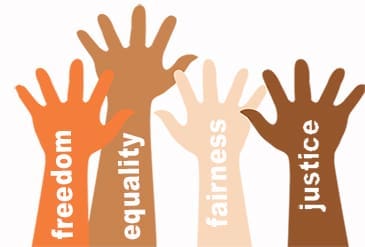 Some members of the Church have suggested that God would not allow blacks to receive the priesthood until 1978 because white members simply were not ready. To accept such reasoning, one must accept that God places greater concern upon the emotional reactions of a small group of whites than the eternal salvation of millions of his black children. Further, one must accept that God’s own righteous designs, powers, and plans for the billions on the planet were suspended for generations to accommodate a handful of white Mormons in the 20th Century.
Some members of the Church have suggested that God would not allow blacks to receive the priesthood until 1978 because white members simply were not ready. To accept such reasoning, one must accept that God places greater concern upon the emotional reactions of a small group of whites than the eternal salvation of millions of his black children. Further, one must accept that God’s own righteous designs, powers, and plans for the billions on the planet were suspended for generations to accommodate a handful of white Mormons in the 20th Century.
Though the LDS Church claims that it is diverse and has always been so, Thomas Alexander’s research asserts that there were fewer than 100 blacks in the entire LDS Church in 1940. [19] The Urban League published a report in 1954 concluding that Utah, Nevada, and Arizona were almost exclusively white and as racist as the South. Utah’s racist beliefs became so culturally ingrained that Charles Nabors, an NAACP official, declared that the state had “potentially the worst race problem in the United States.” [20] Could it be possible that the religion’s inherently racist belief in skin tone originating from God’s curse, consistently indoctrinated over multiple generations, fostered racism?
Joseph’s Eternal Servant
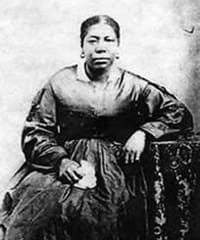 One of the most heart-rending stories of Mormon history comes from Jane Elizabeth Manning, Joseph Smith’s dedicated maid of many years. The LDS Church uses her today as an example of devotion and persistence, but in her own lifetime it seems she was seen as a thorn in the side of the leadership. Manning requested of President Taylor throughout the 1880s and 90s to grant her temple privileges. Her requests were repeatedly denied. Based on an invitation the Smith’s had made to her decades earlier, Jane requested that she be sealed to the prophet’s family.
One of the most heart-rending stories of Mormon history comes from Jane Elizabeth Manning, Joseph Smith’s dedicated maid of many years. The LDS Church uses her today as an example of devotion and persistence, but in her own lifetime it seems she was seen as a thorn in the side of the leadership. Manning requested of President Taylor throughout the 1880s and 90s to grant her temple privileges. Her requests were repeatedly denied. Based on an invitation the Smith’s had made to her decades earlier, Jane requested that she be sealed to the prophet’s family.
In 1894, Jane’s request was finally granted, under the condition that she be “adopted to the prophet not as his child, but as his eternal servant in exaltation.” [21] Her sealing to Smith was performed via proxy, by a white man, because Jane’s skin color prevented her from attending her own temple sealing ceremony. Jane continued to petition to receive her endowment, but was denied. She was posthumously endowed, again by proxy, in 1979 only after the ban against those of African blood being allowed exaltation through temple endowment was lifted. President Joseph F. Smith spoke at her funeral and declared that she would become a white and beautiful person in the eternities.
LEARN MORE:
- Narrating Jane: Telling The Story of an Early African American Mormon Woman, Quince Newell
- Wiki, Jane Manning James
HOW THE RACE BAN LIFTED
It is instructive to look back at the process of “revelation” for lifting the race ban. As early as 1954, President McKay formed a special investigative committee, led by Elder Adam Bennion, to explore the race-based restrictions. The committee concluded that there was no scriptural basis for the doctrine, that it was policy, but many Church members were not prepared for its reversal. President McKay never shared his insight with The Twelve, and his private lobbying failed to muster sufficient votes. All but three wanted to overturn the ban, but unanimity is required. This begs the question; does revelation depend upon God, on the unanimity of leadership, or the readiness of the membership?
In 1968, as George Romney was running for President of the U.S., The New York Times ran an article critical of the African-blood priesthood/exaltation restriction, citing inactive LDS Secretary of Interior, Stewart Udall. Word had also leaked out that many in the Twelve wanted the ban lifted. By 1969, McKay still wanted to lift the restriction, as did Hugh B Brown, 1st Counselor, and several others. While Harold B. Lee was traveling, McKay gathered the Quorum and voted, unanimously agreeing to lift the race ban. Upon his return, realizing what had occurred, Lee argued that the ban could not be lifted with an administrative vote, as revelation would be required to change doctrine. He lobbied his allies and argued for a re-vote, like Boyd K Packer, who then voted to retain the race ban doctrine.
In 1969, Lester Bush received a tip suggesting he locate Apostle Adam Bennion’s notes from President McKay’s 1954 investigation of the ban. The notes, housed at Brigham Young University, demonstrated that the then prophet McKay and others understood the ban to be mere policy, not doctrine. Bennion’s papers confirmed that no revelation ever existed, nor did any secondhand references supporting it. Bush prepared an article for publication in Dialogue. Boyd K. Packer, shown the manuscript in the fall of 1972, immediately consulted the Presidency and investigated how Bush could have accessed such sensitive information.
Packer interviewed Bush over a couple of days, attempting to dissuade publication without expressly requesting such. When pressed, Packer could not provide any errors or corrections. The Church then leveraged the Vice President of BYU to dissuade publication, suggesting fallout among Bush’s friends in the Church History Department. The tactics did not succeed, as Bush was from California and not under the employ of the Church. During this episode, the Apostles never consulted the Church’s own history division, who was already aware of the origination of the racial restrictions.
From 1972 to 1973, Harold B. Lee was briefly president and prophet of the LDS Church. His daughter noted, “My daddy said that as long as he’s alive, they’ll never have the priesthood.” After President McKay’s death in 1970, Hugh B. Brown was not retained in the first presidency by Joseph Fielding Smith. Spencer W. Kimball became President in late 1973.
But there might not have been any change were it not for the fact that in 1974, the LDS doctrine of discrimination against African Americans brought the Boy Scouts into a serious confrontation with the NAACP. The Boy Scouts of America did not discriminate on the basis of religion or race, but Mormon-sponsored troops did. The NAACP filed a federal lawsuit and further social and political recriminations followed.
By 1977, Mormons had been shut out of Pres. Jimmy Carter’s administration, as he was blackballing the Church for its ongoing racism and outdated views of women’s issues, specifically their vigorous opposition to the Equal Rights Amendment. On March 11, 1977, President Carter met with Kimball and other LDS Church leaders at the White House, directly expressing his negative opinion of the Church’s race policy.
Subsequently, President Kimball investigated the practical ramifications of lifting the ban, and how many members would abandon the Church. He lobbied extensively behind the scenes for months, meeting with each member individually before calling all Apostles and the First Quorum of Seventies to the temple. The Church finally lifted the race ban in September 1978, repeatedly calling it revelation from God, thus sidestepping the prolonged history of its institutionalized racist doctrine. The LDS Church promptly moved forward as if the ban had never happened, and as if its unique scriptures no longer promoted racism.
LEARN MORE:
- Gospel Tangents: Did Pres. McKay Try to Rescind Ban in 1955?
- See Leonard Arrington: The Writing of Mormon History, 309-325 for greater context of this era.
LDS RACE DOCTRINE: NATIVE AMERICANS
The Book of Mormon clearly elaborates on how God cursed the wicked ancestors of the American Indians, called “Lamanites,” darkening their skin to make them undesirable to the righteous white Indians. There can be no doubt that the curse contained in the Book of Mormon refers specifically to skin color changing from white to dark, even loathsome; rather than some undefined form of spiritual curse or separation from God’s spirit, stemming from bad behavior or apostasy. Nor is the curse of dark skin a passing reference; as the false notion is integral to the entire story spanning 1,000 years.
Here are multiple quotes, just some among many, from the beginning to the end of the Mormon scripture:
1 Nephi 12:23 – “…they [the Lamanites] became a dark and loathsome, and a filthy people, full of idleness and all manner of abominations.”
1 Nephi 13:15 – “…they [the righteous Nephites] were white, and exceedingly fair and beautiful, like unto my people before they were slain.”
2 Nephi 5:21 – “God caused the cursing to come upon them [the Lamanites]…they were white…that they might not be enticing unto my people [the righteous Nephites] …God did cause a skin of Blackness to come upon them.”
2 Nephi 30:6 – “…they shall be a white and delightsome people.” (Original 1830 edition, prior to edit, which now reads “a pure and delightsome people.”)
Alma 3: 6-19 – “And the skins of the Lamanites were dark, according to the mark which was set upon their fathers, which was a curse upon them because of their transgression…” Later in the text, the Lamanites turn to the doctrine of Christ and their dark-skin curse is reversed.
3 Nephi 2:15 – “…curse was taken from them…skin became white like unto Nephites.”
Jacob 3:5, 8, 9 – “Behold the Lamanites…whom ye hate because of their filthiness and the cursing which hath come upon their skins…that their skins will be whiter than yours…revile no more against them because of the darkness of their skins.”
3 Nephi 2:15 – “And their curse was taken from them [the repentant Lamanites], and their skin became white…”
Mormon 5:15 – “…and [the wicked Lamanites] shall become a dark, a filthy, and a loathsome people, beyond the description of that which ever hath been amongst us…”
Canonized in LDS scripture and instructed for generations by the prophets, Mormon race doctrine about the change in the skin color of Lamanites remained very clear. A Church priesthood manual from 1930 instructed how LDS Gospel makes Lamanites whiter, linking white skin and blessed in the same sentence. It is little wonder how generations of Mormons continued to acquire these racist views well after mainstream society had discarded them.
Due to a literal belief in gathering the so-called Lamanite descendants among the Native Americans, and thereby bringing them to Christ while lightening their skin color, the LDS Church initiated the Indian Placement Program in the 1950s, also known as the Lamanite Placement Program, which relocated some 50,000 Native American youth from their native homes into homes with white Mormon families. The program operated into the 1990s with the stated purpose of developing leadership among Native Americans while assimilating them into white-American culture.
Native Americans often share a different view on the LDS Church’s unique message of redemption and involvement in their communities. The Salt Lake Tribune captured this sentiment well in April 1984, when quoting Sioux Indian and political science professor at the University of Arizona, Vine Deloria Jr., who said “Mormons are taking Indian children off reservations and indoctrinating them in the church’s beliefs… The Mormon Church Placement Program threatens Indians.” Others summarized the program as follows: “When non-Mormon Indians are asked about the program, their response is invariably bitter and hostile as they explain that many Indians view the program as a form of kidnapping that takes away the Indian community’s most prized people, it’s youth.” [22]
Even as late as 2020, the LDS Church’s updated Sunday school manual, Come, Follow Me, continues to instruct that “The dark skin was placed upon the Lamanites so that they could be distinguished from the Nephites and to keep the two peoples from mixing.” Only after complaints about the modern day perpetuation of racism and debunked white supremacist theories escalated did the Church respond with yet another round of official statements declaring how LDS scripture and its freshly minted lesson manual “doesn’t reflect the church’s current views on the topic.” The Church declared its publication to be in error and modified only the digital version of its lesson, while leaving its canonized scriptural source and printed manuals unchanged. [23]
This latest round of public embarrassment and awkward handling by the LDS Church prompted a flurry of apologetic explanations which suggest that the curse so clearly defined in the Book of Mormon actually refers to the “withdrawal of the Holy Spirit.” Many were quick to recognize that such a scenario would hardly represent punishment to a people that had already deliberately rejected the Holy Spirit.
Spencer W. Kimball
Spencer Kimball, who was one of the chief architects and proponents of the Indian Placement program, wrote, “The day of the Lamanites is nigh. For years they have been growing delightsome, and they are now becoming white and delightsome, as they were promised. In this picture of the twenty Lamanite missionaries, fifteen of the twenty were as light as Anglos; five were darker but equally delightsome. The children in the home placement program in Utah are often lighter than their brothers and sisters in the hogans on the reservation.”
He reiterated his literal view of a dark-skin curse upon Lamanites being reversed by a God who used skin color as a proxy for spiritually by saying, “At one meeting a father and mother and their sixteen-year-old daughter were present, the little member girl — sixteen — sitting between the dark father and mother, and it was evident she was several shades lighter than her parents — on the same reservation, in the same hogan, subject to the same sun and wind and weather. There was the doctor in a Utah city who for two years had had an Indian boy in his home who stated that he was some shades lighter than the younger brother just coming into the program from the reservation. These young members of the Church are changing to whiteness and to delightsomeness. One white elder jokingly said that he and his companion were donating blood regularly to the hospital in the hope that the process might be accelerated.” [24]
Whether or not the little girl’s skin color was lighter than that of her parents is irrelevant. What is important is that Kimball clearly saw lighter skin as a sign of God’s favor. Another name for this is white supremacy, the belief that whites are superior to other races.
Kimball prophesied later, “When the Lamanites fully repent and sincerely receive the gospel, the Lord has promised to remove the dark skin…Perhaps there are some Lamanites today who are losing the dark pigment…could readily pass as of the white race.” [25] Again, this is a clear case of racial bias masquerading as divine doctrine, since “passing” as white is seen as a good thing.
CONCLUSION
LDS history and doctrine regarding race is fraught with contradictions and inexplicable pivots. The irony is that Church teachings, even its sacred temple ordinances, often refer to untrue religions as being based upon “the philosophies of men mingled with scripture,” and yet that seems to precisely describe the Church’s latest position on its racist teachings.
LEARN MORE
- LDS Race and the Priesthood Essay.
- Brigham Young addresses Utah Legislature, Feb 5, 1852.
- Dialogue: Mormonism Negro Doctrine.
- Black People and Mormonism.
- The Lowery Nelson Exchange provides fascinating insight into Mormon race doctrine.
- Science Magazine: New Gene Variants Reveal Evolution of Human Skin Color.
- List of racist LDS leadership quotes on race.
[1] This Is My Doctrine, Charles R. Harrell, 388.
[2] Statement of the First Presidency, August 17, 1949, LDS Church Archives.
[3] Star News, Salt Lake City newspaper, Oct 15, 1977.
[4] Journal of Discourses 5:332~.
[5] Brigham Young, Interview with Horace Greeley, Salt Lake City, Utah, July 13, 1859.
[6] Journal of Discourses 10:110.
[7] Journal of Discourses, vol 22, 304.
[8] John Taylor, Times and Seasons, April 1, 1845, 6:857.
[9] Decisions for Successful Living, 165.
[10] Harold B. Lee April 19, 1961, BYU Speeches of the Year, 1961, 7.
[11] Race Problems – As They Affect The Church, Apostle Mark E. Petersen, BYU, August 27, 1954.
[12] Brigham Young: Pioneer Prophet, 222.
[13] The Teachings of President Brigham Young Vol. 3 1852–1854, 44.
[14] Journal of Discourses, vol 10, 110.
[15] Spencer Kimball, The Teachings of Spencer W. Kimball, 303.
[16] Harold B. Lee, Decisions for Successful Living, 168.
[17] Elder Russell Nelson, LDS General Conference, 1995.
[18] Fawn Brodie.
[19] Utah: The Right Place, Thomas Alexander, Salt Lake: Gibbs Smith Publisher, 1995, 329.
[20] Interview with Charles Nabors, Indianapolis Star, Nov. 6, 1963.
[21] LDS Media Library, Men & Women of Faith, March 2012.
[22] Bob Gottlieb and Peter Wiley, The Kids Go Out Navaho, Came Back Donny and Marie, Los Angeles Magazine, December 1979, 140~.
[23] Error in printed LDS Church Manual, Salt Lake Tribune
[24] The Day of the Lamanite, Spencer W. Kimball, General Conference, Oct. 1960.
[25] Prophet Joseph Fielding Smith, Answers to Gospel Questions, 1953, vol 3, 123.


